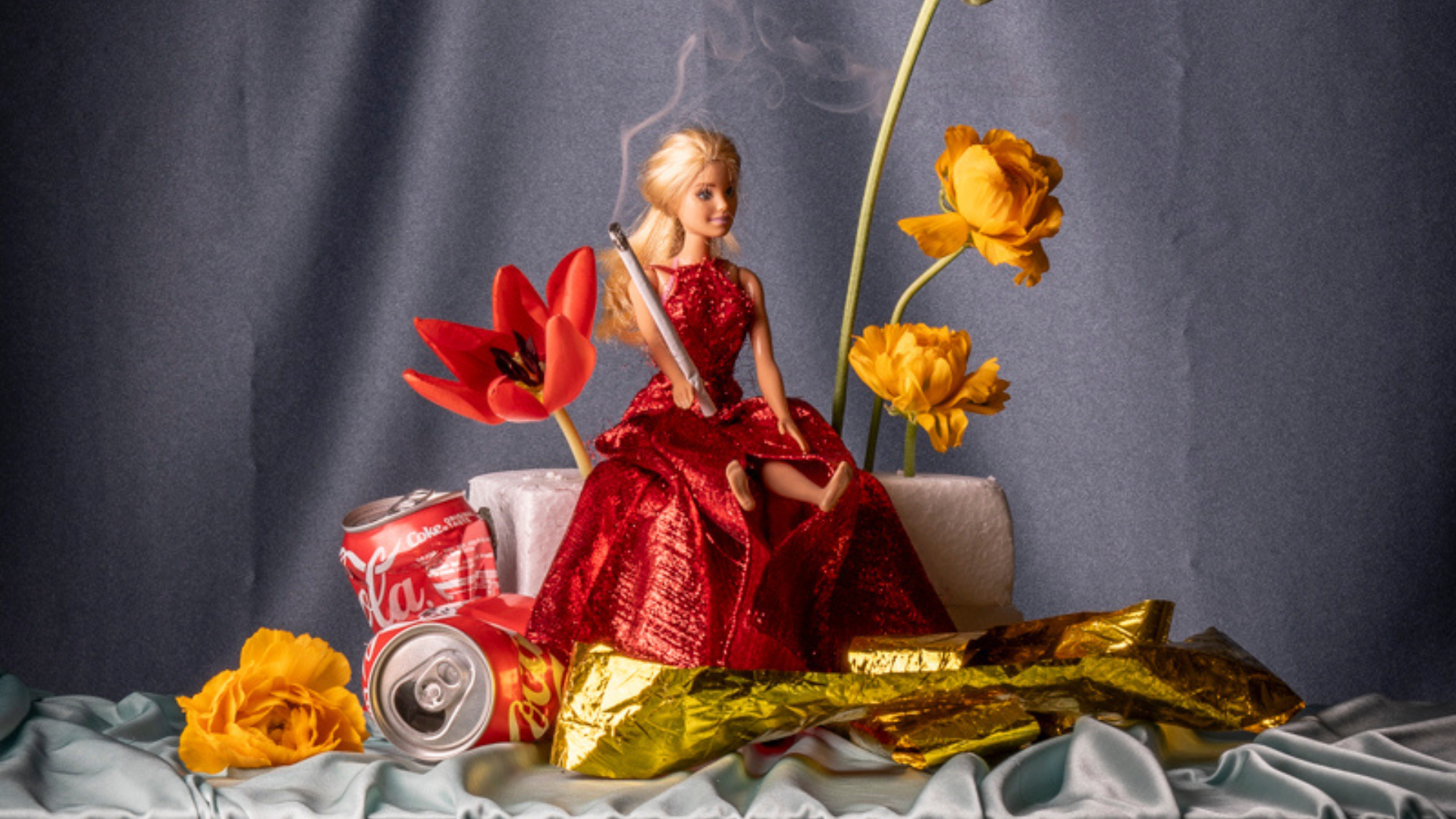
Kelly Ekardt – Frankfurt Floral Artist & Stylist
From the world of high fashion to the art of floral design, Kelly Ekardt has carved a unique path in

Chanelle Adams, an artist, researcher, and writer, combines her passion for plants with her deep intellectual curiosity. From childhood memories of working in a historic iris garden to creating performances around jacaranda trees in Madagascar, Chanelle’s artistic work bridges botany, culture, and art. Her Instagram account, @plant_selfie_, is a space where plants—both familiar and obscure—are celebrated. In this interview, Chanelle talks about the ways in which flowers shape her art, her motivations behind documenting plant life, and her thoughts on the intersections of plants and human connection.
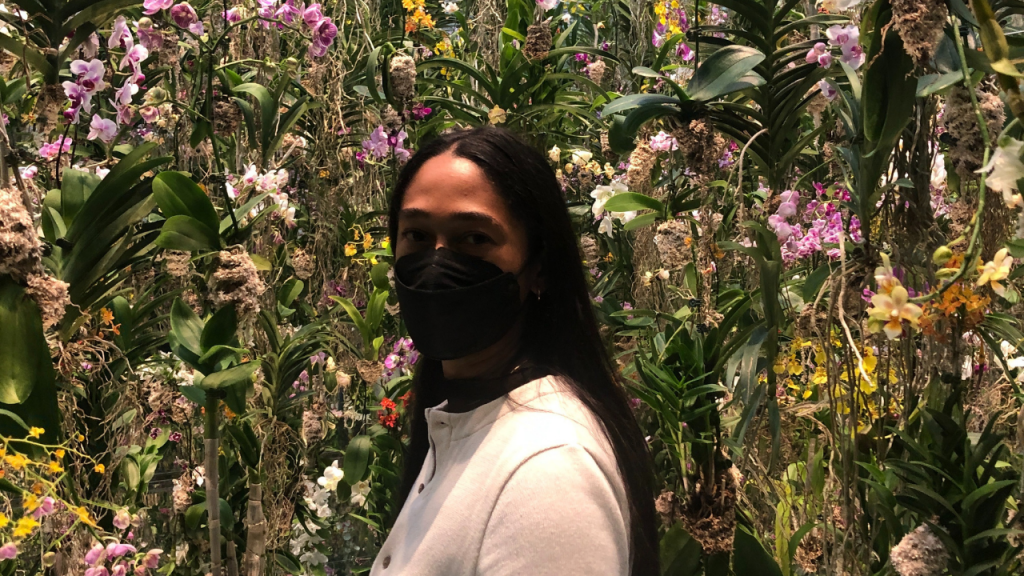
How were you introduced to the world of flowers?
Both of my grandmothers loved flowers! One had a garden of wildflowers and edible greens in the countryside, the other, lived in the city and sculpted arrangements of dollar-store flowers into green floral foam. My mom and I, living in an apartment, and without a garden of our own, volunteered at a historic iris garden when I was a child. We spent weekends weeding a bed in exchange for a small plot where we could grow whatever we wanted. I remember black-eyed Susans and green beans. Looking back, I can see how this influenced me to be interested in research and art practices related to plants.
Why do you love photographing flowers?
What we pay attention to grows. Documenting flowers slows me down and helps me notice beauty and change in my life. I often travel for research and to visit people I love dispersed around the world. During all this movement, I ground myself in space and time by looking at the literal ground.
Also, sometimes taking a photo feels better than picking a flower. I have an ongoing preoccupation (or maybe a superstition) about the violence of beauty. A flower is the culmination of so much unseen labor: the plant’s effort, the soil’s composition, the weather’s patience. To pluck it, especially if I can’t care for it, can feel violent. Other times, the impulse is irresistible, and I snatch them up to press them between book pages. I haven’t settled on a stance.
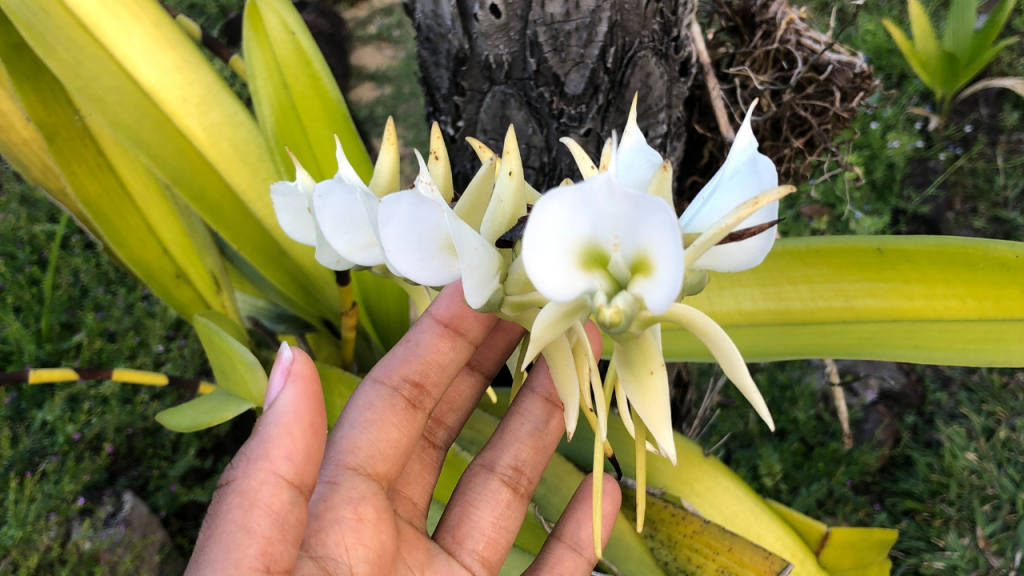
What inspired you to start featuring flowers on Instagram?
I got tired of feeding the algorithm and wanted the algorithm to feed me. My “plant selfie” account started as an experiment to train my explore page to show me only plants. At first, it was a private account, just for me, but I forgot to turn off social suggestions, and people I know started finding it. So then during Covid-19 lockdowns and social distancing, I started inviting friends to send selfies touching plants to feature on the page. It became a multi-species way to archive and maintain connection, something like a record of botanical intimacy across distance.
Are there any artists who inspire you most?
The divine creator(s) of our curious planet. And also all my friends and family.
Where are your favorite spots to find flowers to photograph?
On walks. In both unexpected and obvious places.
But interests extend far beyond flowers. Maybe they are the most charismatic to photograph, but I’m generally curious about all plants and other non-humans.
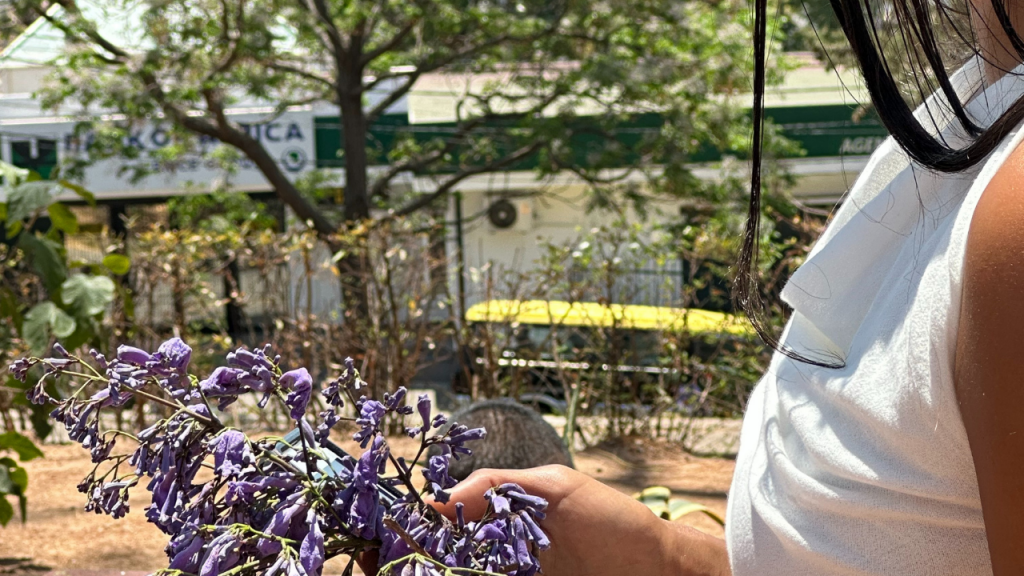
How would you describe your style of floral art?
A meditation on presence and impermanence. Deep place-based listening. Bouquets that honor history, liberation politics, and potential futures.
Do you have a favorite material or season?
No, but I have favorite climates. Any flower market in a tropical climate is exciting to me. I particularly love the night flower markets in Hanoi.
What is your favorite flower?
I could never pick just one. Lotus, lilies, and protea. Lately, I’ve been drawn to the fragrance of white flowers like jasmine and paperwhites.
Do you have any flower secrets or tips to share?
Wouldn’t be secrets if I shared them 🙂 My mom tells me she can hear plants, and I think she’s right.
What was the best part about creating a plant book?
Collaborating with artists and writers across different contexts. As a writer and editor, curating a polyvocal conversation to meet on the page is always rewarding.
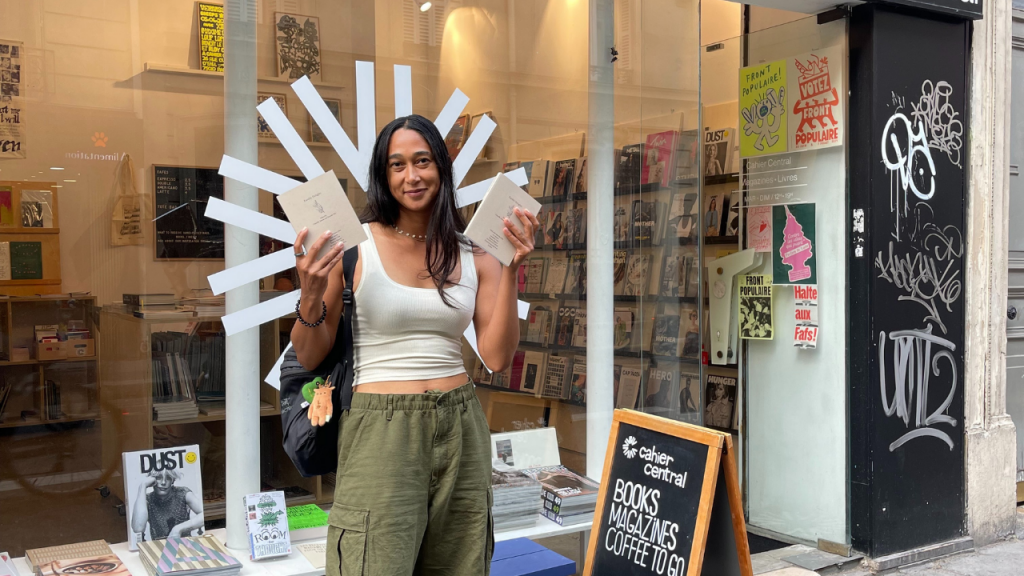
Have you taken part in any exciting flower events recently?
Yes, a couple! I put together a performance in Madagascar called Zaridaina (Malagasy for “garden”) around 100-year-old jacaranda trees in the Antaninarenina Garden in Antananarivo. It took place in October when the purple flowers were in full bloom. Last summer, I also worked on a botanical design project for a gallery pop-up in Paris. There were some flowers involved, but we mostly worked with moss. I also spoke on a podcast for Thyssen-Bornemisza Art Contemporary about naming, taxonomy, and categorization in relation to the broader discipline of botany (listen here).
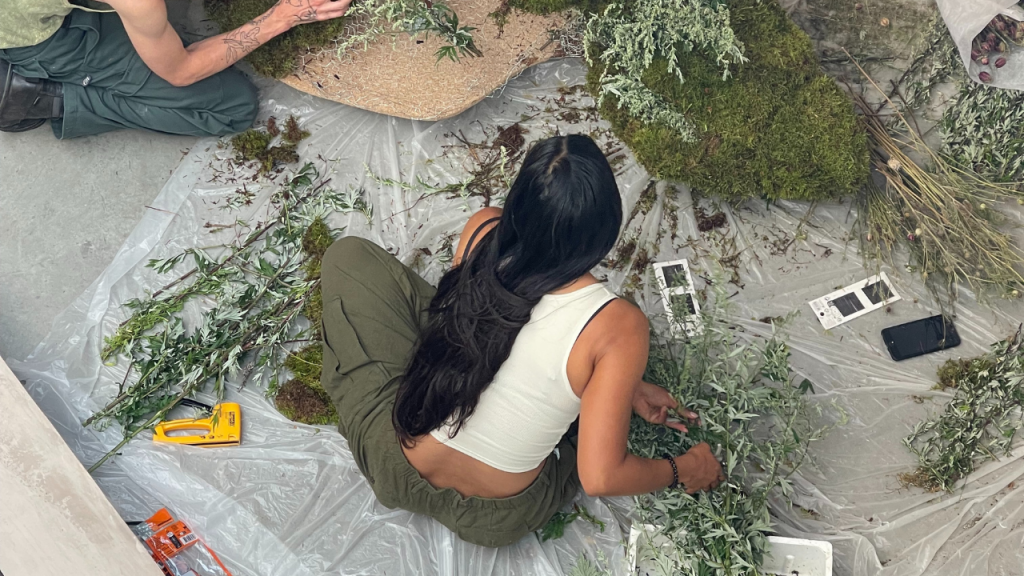
For flower lovers—where would you recommend they visit in your city for a 24-hour stay?
I am currently living and studying between Switzerland and Madagascar. In Switzerland, where I am currently, I recommend La Rambertia. It’s a small alpine botanical garden perched on the edge of a cliff with 1,000+ flower varieties at 2,025m. It’s only open in the summer. In the fall, go walk in the Lavaux vineyards.
What’s ahead in your flower future?
More soon. Right now, I’m finishing up my Geography dissertation about people whose livelihoods depend on making medicine from the camphor tree in Madagascar (more info here and here).
Chanelle Adams’ unique approach to art, plants, and the world around her invites us to slow down and reflect on the small beauties that surround us. Her work blends intellectual curiosity with botanical intimacy, creating connections that transcend the physical realm. For more information on her work, upcoming events, and research, visit her website at chanelleadams.info or follow her on Instagram @plant_selfie_.

From the world of high fashion to the art of floral design, Kelly Ekardt has carved a unique path in
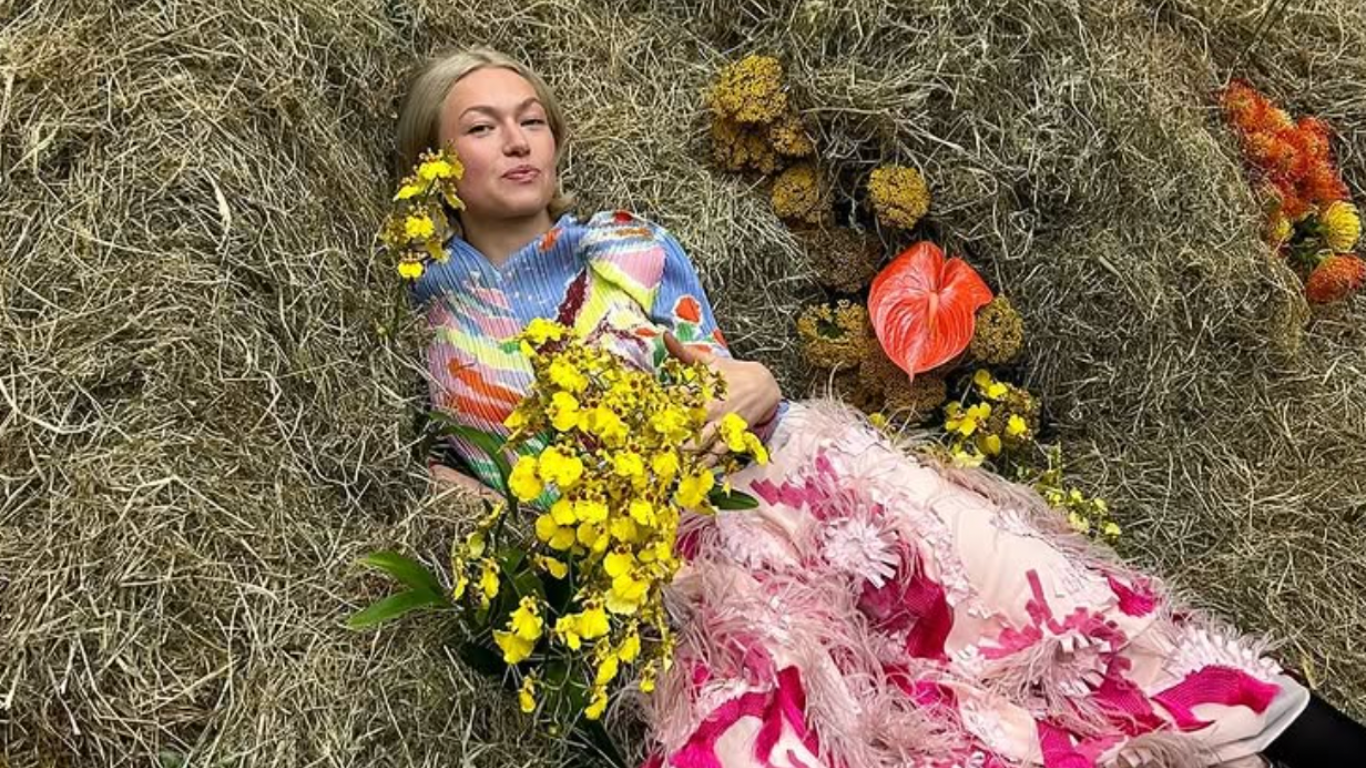
Amsterdam-based floral artist Ariella Hill, the creative force behind RAE Blooms, has had a whirlwind time since we last caught